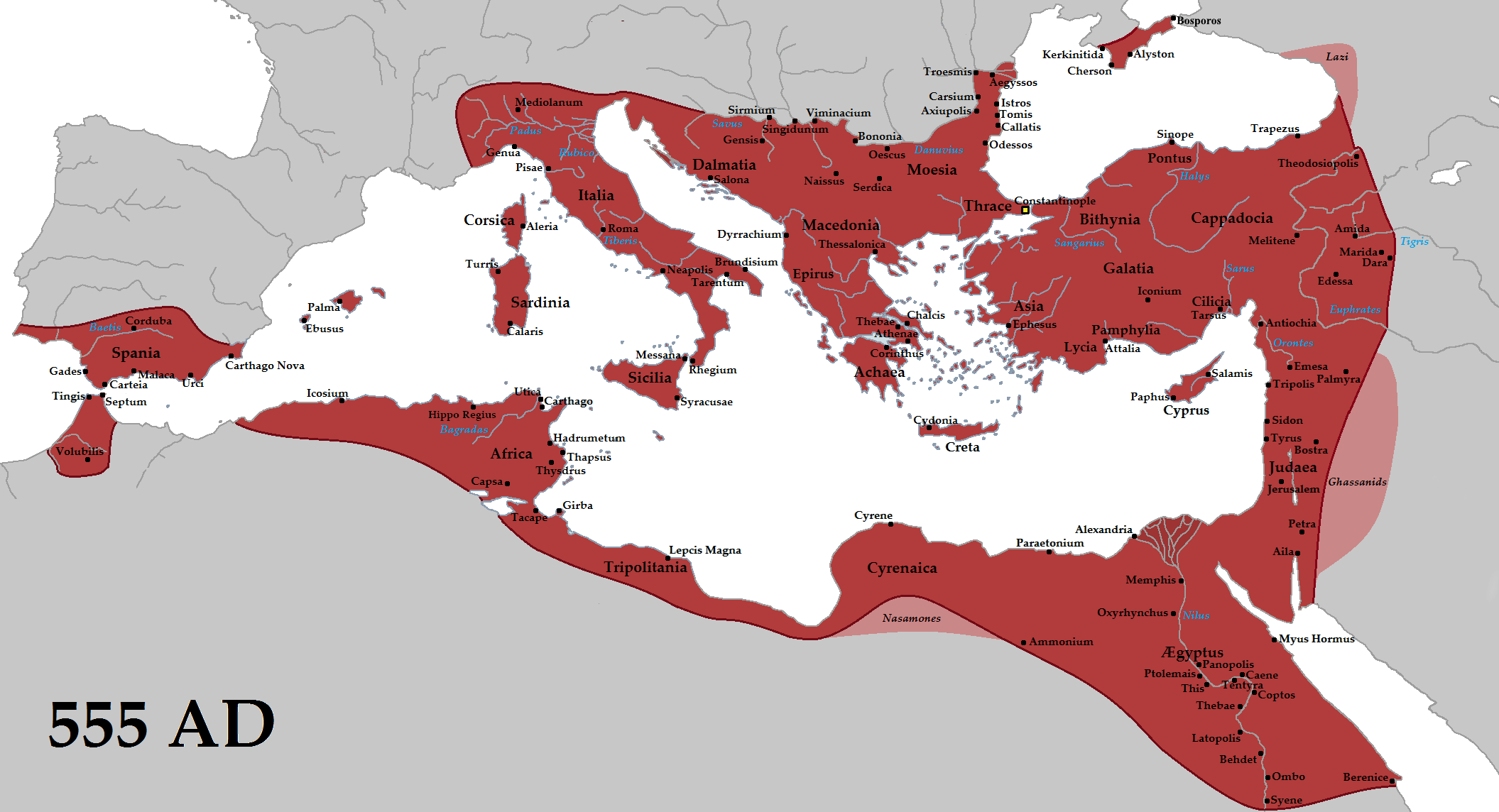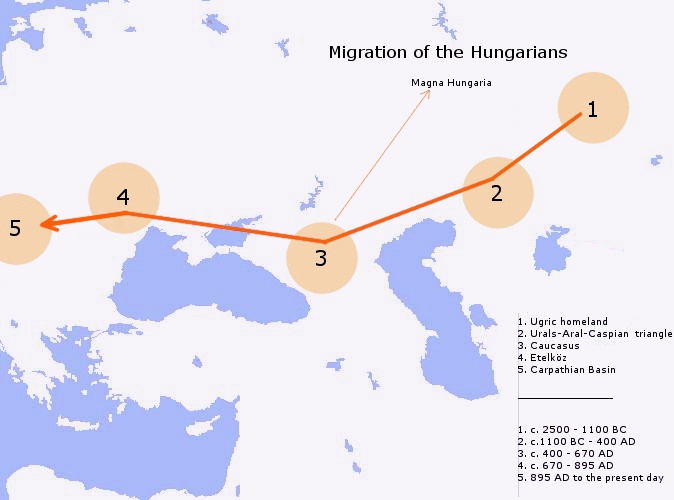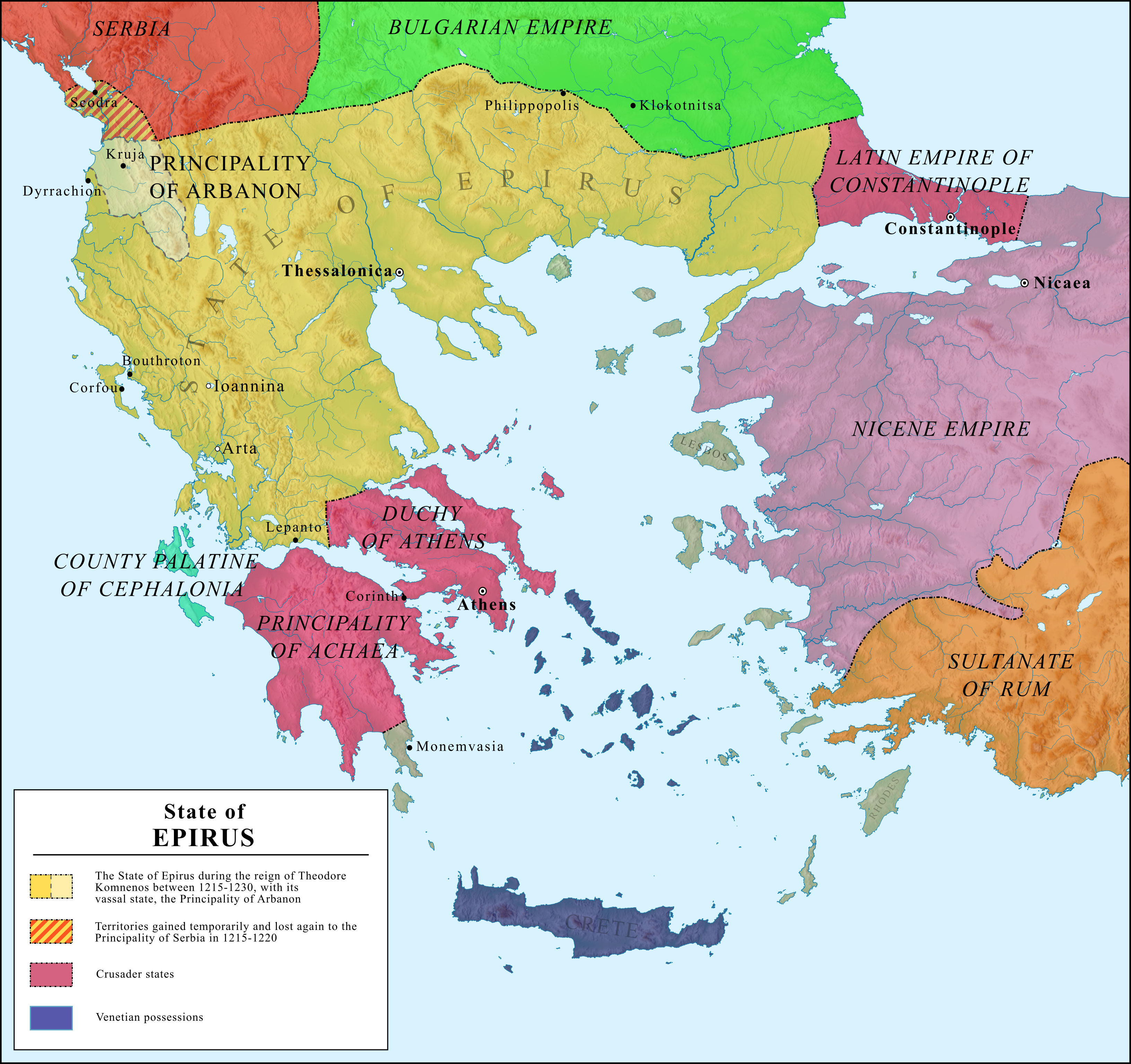|
Byzantine Army
The Byzantine army was the primary military body of the Byzantine Empire, Byzantine armed forces, serving alongside the Byzantine navy. A direct continuation of the East Roman army, Eastern Roman army, shaping and developing itself on the legacy of the late Hellenistic armies, it maintained a similar level of discipline, strategic prowess and organization. It was among the most effective armies of western Eurasia for much of the Middle Ages. Over time the cavalry arm became more prominent in the Byzantine army as the Roman legion, legion system disappeared in the early 7th century. Later reforms reflected some Germanic peoples, Germanic and Asian people, Asian influences—rival forces frequently became sources of mercenary units, such as the Huns, Cumans, Alans and (following the Battle of Manzikert) Turkic peoples, Turks, meeting the Empire's demand for light cavalry Mercenary, mercenaries. Since much of the Byzantine military focused on the strategy and skill of generals utili ... [...More Info...] [...Related Items...] OR: [Wikipedia] [Google] [Baidu] |
List Of Byzantine Wars
This is a list of the wars or external conflicts fought during the history of the Eastern Roman or Byzantine Empire (395–1453). For internal conflicts see the list of Byzantine revolts and civil wars. For conflicts of the Ancient Roman Kingdom, Republic and Empire see the: List of Roman wars and battles. 5th century and earlier * 421–422: Roman–Sasanian War of 421–422 * 440: Byzantine–Sasanian War of 440 with Sassanid Persia * 492: Battle of Cotyaeum – The Byzantine army under John the Scythian defeated Isaurians under Longinus of Cardala. 6th century * 502–506: Anastasian War with Sassanid Persia. * 526–532: Iberian War with Sassanid Persia. * Justinian campaigns (533–555): The Eastern Roman emperor Justinian launched an ambitious reconquest of Italy, North Africa and parts of Spain. However, new invaders like the Pannonian Avar, Avars, Kingdom of the Lombards, Lombards and Sclaveni, Slavs, alongside a pandemic known as the Plague of Justinian and various ... [...More Info...] [...Related Items...] OR: [Wikipedia] [Google] [Baidu] |
Armenians
Armenians (, ) are an ethnic group indigenous to the Armenian highlands of West Asia.Robert Hewsen, Hewsen, Robert H. "The Geography of Armenia" in ''The Armenian People From Ancient to Modern Times Volume I: The Dynastic Periods: From Antiquity to the Fourteenth Century''. Richard G. Hovannisian (ed.) New York: St. Martin's Press, 1997, pp. 1–17 Armenians constitute the main demographic group in Armenia and constituted the main population of the breakaway Republic of Artsakh until their Flight of Nagorno-Karabakh Armenians, subsequent flight due to the 2023 Azerbaijani offensive in Nagorno-Karabakh, 2023 Azerbaijani offensive. There is a large Armenian diaspora, diaspora of around five million people of Armenian ancestry living outside the Republic of Armenia. The largest Armenian populations exist in Armenians in Russia, Russia, the Armenian Americans, United States, Armenians in France, France, Armenians in Georgia, Georgia, Iranian Armenians, Iran, Armenians in Germany, ... [...More Info...] [...Related Items...] OR: [Wikipedia] [Google] [Baidu] |
Heruli
The Heruli (also Eluri, Eruli, Herules, Herulians) were one of the smaller Germanic peoples of Late Antiquity, known from records in the third to sixth centuries AD. The best recorded group of Heruli established a kingdom north of the Middle Danube, probably including the area north of present day Vienna. This kingdom was a neighbour to several other small and short-lived kingdoms in the late 5th century AD and early 6th century, including those of the Sciri, Rugii, Danubian Suebi, and Gepids. After the conquest of this Heruli kingdom by the Lombards in 508, splinter groups moved to Sweden, Ostrogothic Italy, and present-day Serbia, which was under Eastern Roman control. The Danubian Heruli are generally equated to the "Elouri" who lived near the Sea of Azov during the late 3rd or early 4th century, and are believed to have migrated westwards. In 267-270 these Elouri took part together with Goths and other eastern European peoples in two massive raids into Roman provinces in ... [...More Info...] [...Related Items...] OR: [Wikipedia] [Google] [Baidu] |
Magyars
Hungarians, also known as Magyars, are an ethnic group native to Hungary (), who share a common culture, language and history. They also have a notable presence in former parts of the Kingdom of Hungary. The Hungarian language belongs to the Ugric branch of the Uralic language family, alongside the Khanty and Mansi languages. There are an estimated 14.5 million ethnic Hungarians and their descendants worldwide, of whom 9.6 million live in today's Hungary. About 2 million Hungarians live in areas that were part of the Kingdom of Hungary before the Treaty of Trianon in 1920 and are now parts of Hungary's seven neighbouring countries, Slovakia, Ukraine, Romania, Serbia, Croatia, Slovenia, and Austria. In addition, significant groups of people with Hungarian ancestry live in various other parts of the world, most of them in the United States, Canada, Germany, France, the United Kingdom, Chile, Brazil, Australia, and Argentina, and therefore constitute the Hungarian diaspo ... [...More Info...] [...Related Items...] OR: [Wikipedia] [Google] [Baidu] |
Rus' (people)
The Rus, also known as Russes, were a people in Early Middle Ages, early medieval Eastern Europe. The scholarly consensus holds that they were originally Norsemen, mainly originating from present-day Sweden, who settled and ruled along the Route from the Varangians to the Greeks, river-routes between the Baltic Sea, Baltic and the Black Seas from around the 8th to 11th centuries AD. The two original centres of the Rus' were Staraya Ladoga, Ladoga (''Aldeigja''), founded in the mid-8th century, and Rurikovo Gorodische (''Holmr''), founded in the mid-9th century. The two settlements were situated at opposite ends of the Volkhov (river), Volkhov River, between Lake Ilmen and Lake Ladoga, and the Norsemen likely called this territory ''Gardar''. From there, the name of the Rus' was transferred to the Middle Dnieper, and the Rus' then moved eastward to where the Finnic peoples, Finnic tribes lived and southward to where the Slavs lived. The name ''Garðaríki'' was applied to the ne ... [...More Info...] [...Related Items...] OR: [Wikipedia] [Google] [Baidu] |
Avars (Carpathians)
The Pannonian Avars ( ) were an alliance of several groups of Eurasian nomads of various origins. The peoples were also known as the Obri in the chronicles of the Rus, the Abaroi or Varchonitai (), or Pseudo-Avars in Byzantine sources, and the Apar () to the Göktürks. They established the Avar Khaganate, which spanned the Pannonian Basin and considerable areas of Central and Eastern Europe from the late 6th to the early 9th century. The name Pannonian Avars (after the area in which they settled) is used to distinguish them from the Avars of the Caucasus, a separate people with whom the Pannonian Avars may or may not have had links. Although the name ''Avar'' first appeared in the mid-5th century, the Pannonian Avars entered the historical scene in the mid-6th century, on the Pontic–Caspian steppe as a people who wished to escape the rule of the Göktürks. They are probably best known for their invasions and destruction in the Avar–Byzantine wars from 568 to 626 and in ... [...More Info...] [...Related Items...] OR: [Wikipedia] [Google] [Baidu] |
Axum
Axum, also spelled Aksum (), is a town in the Tigray Region of Ethiopia with a population of 66,900 residents (as of 2015). It is the site of the historic capital of the Aksumite Empire. Axum is located in the Central Zone of the Tigray Region, near the base of the Adwa mountains. It has an elevation of and is surrounded by La'ilay Maychew, a separately administered woreda of the Tigray region. In 1980, UNESCO added Axum's archaeological sites to its list of World Heritage Sites due to their historic value. Prior to the beginning of the Tigray War in 2020, Axum was a leading tourist destination for foreign visitors. History Ancient Little information is available regarding the early centuries of Aksum's presumed evolution from a humble regional hub to a dominant power. Archeological findings at Gobadra (Gobo Dara) and the Anqar Baahti rock-shelters suggest Stone Age remnants in close proximity. R. Fattovich's excavations at amba 'Beta Giyorgis above Aksum validate the ... [...More Info...] [...Related Items...] OR: [Wikipedia] [Google] [Baidu] |
Khazars
The Khazars ; 突厥可薩 ''Tūjué Kěsà'', () were a nomadic Turkic people who, in the late 6th century CE, established a major commercial empire covering the southeastern section of modern European Russia, southern Ukraine, Crimea, and Kazakhstan. They created what, for its duration, was the most powerful polity to emerge from the break-up of the Western Turkic Khaganate. Astride a major artery of commerce between Eastern Europe and Southwestern Asia, Khazaria became one of the foremost trading empires of the early medieval world, commanding the western marches of the Silk Road and playing a key commercial role as a crossroad between China, the Middle East, and Kievan Rus'. For some three centuries (–965), the Khazars dominated the vast area extending from the Volga-Don steppes to the eastern Crimea and the northern Caucasus. Khazaria long served as a buffer state between the Byzantine Empire, the nomads of the northern steppes, and the Umayyad and Abbasid Caliph ... [...More Info...] [...Related Items...] OR: [Wikipedia] [Google] [Baidu] |
Anatolian Beyliks
Anatolian beyliks (, Ottoman Turkish: ''Tavâif-i mülûk'', ''Beylik''; ) were Turkish principalities (or petty kingdoms) in Anatolia governed by ''beys'', the first of which were founded at the end of the 11th century. A second and more extensive period of establishment took place as a result of the decline of the Seljuq Sultanate of Rûm in the latter half of the 13th century. One of the ''beyliks'', that of the ''Osmanoğlu'' of the Kayı branch of Oghuz Turks, from its capital in Bursa completed its incorporation of the other ''beyliks'' to form the Ottoman Empire by the late 15th century. The word ''beylik'' denotes a territory under the jurisdiction of a ''bey'', equivalent to a duchy or principality in other parts of Europe. History Following the 1071 Seljuk victory over the Byzantine Empire at the Battle of Manzikert and the subsequent conquest of Anatolia, Oghuz Turkic clans began settling in present-day Turkey. The Seljuk Sultanate of Rum's central powe ... [...More Info...] [...Related Items...] OR: [Wikipedia] [Google] [Baidu] |
Crusader States
The Crusader states, or Outremer, were four Catholic polities established in the Levant region and southeastern Anatolia from 1098 to 1291. Following the principles of feudalism, the foundation for these polities was laid by the First Crusade, which was proclaimed by the Latin Church in 1095 in order to reclaim the Holy Land after it was lost to the 7th-century Muslim conquest. From north to south, they were: the County of Edessa (10981150), the Principality of Antioch (10981268), the County of Tripoli (11021289), and the Kingdom of Jerusalem (10991291). The three northern states covered an area in what is now southeastern Turkey, northwestern Syria, and northern Lebanon; the Kingdom of Jerusalem, the southernmost and most prominent state, covered an area in what is now Israel, Palestine, southern Lebanon, and western Jordan. The description "Crusader states" can be misleading, as from 1130 onwards, very few people among the Franks were Crusaders. Medieval and modern write ... [...More Info...] [...Related Items...] OR: [Wikipedia] [Google] [Baidu] |
Albanians
The Albanians are an ethnic group native to the Balkan Peninsula who share a common Albanian ancestry, Albanian culture, culture, Albanian history, history and Albanian language, language. They are the main ethnic group of Albania and Kosovo, and they also live in the neighboring countries of Albanians in North Macedonia, North Macedonia, Albanians in Montenegro, Montenegro, Albanians in Greece, Greece, and Albanians in Serbia, Serbia, as well as in Albanians in Italy, Italy, Albanians in Croatia, Croatia, Albanians in Bulgaria, Bulgaria, and Albanians in Turkey, Turkey. Albanians also constitute a large diaspora with several communities established across Europe and the other continents. Albanian language, The language of the Albanians is an Indo-European languages, Indo-European language and the only surviving representative of the Albanoid, Albanoid branch, which belongs to the Paleo-Balkan languages, Paleo-Balkan group. Albanians ... [...More Info...] [...Related Items...] OR: [Wikipedia] [Google] [Baidu] |
Principality Of Arbanon
Arbanon ( Old Albanian: in Old Gheg, in Old Tosk; ) was a medieval principality in present-day Albania, ruled by the native Progoni family, and the first Albanian state to emerge in recorded history. The principality was established in 1190 by the Albanian ''archon'' Progon in the region surrounding Kruja, to the east and northeast of Venetian territories. Progon was succeeded by his sons Gjin and then Demetrius (Dhimitër), who managed to retain a considerable degree of autonomy from the Byzantine Empire. In 1204, Arbanon attained full, though temporary, political independence, taking advantage of the weakening of Constantinople following its pillage during the Fourth Crusade. However, Arbanon lost its large autonomy c. 1216, when the ruler of Epirus, Michael I Komnenos Doukas, started an invasion northward into Albania and Macedonia, taking Kruja and ending the independence of the principality. From this year, after the death of Demetrius, the last ruler of the Progo ... [...More Info...] [...Related Items...] OR: [Wikipedia] [Google] [Baidu] |






